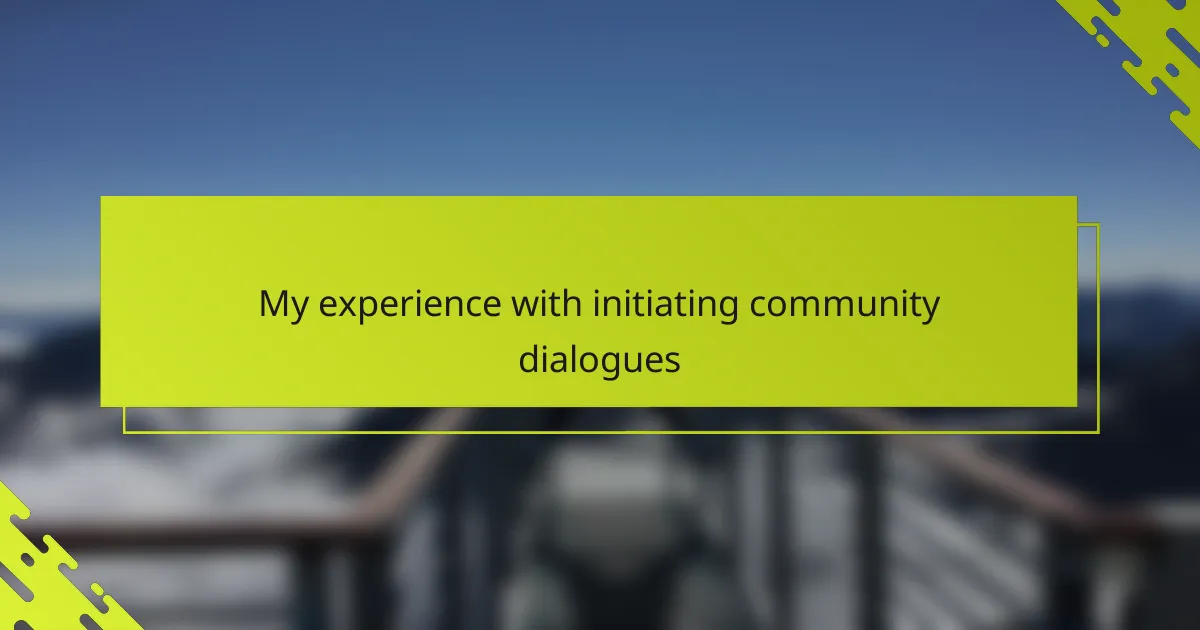Key takeaways
- Community dialogues foster empathy and understanding by creating safe spaces for sharing personal stories and experiences.
- Setting clear goals is crucial for meaningful conversations, focusing on active listening and inclusivity of diverse perspectives.
- Planning effective sessions involves mindful attention to physical and emotional environments, ensuring comfort and openness for participants.
- Embracing vulnerability and imperfections leads to deeper connections and growth within the community dialogue process.
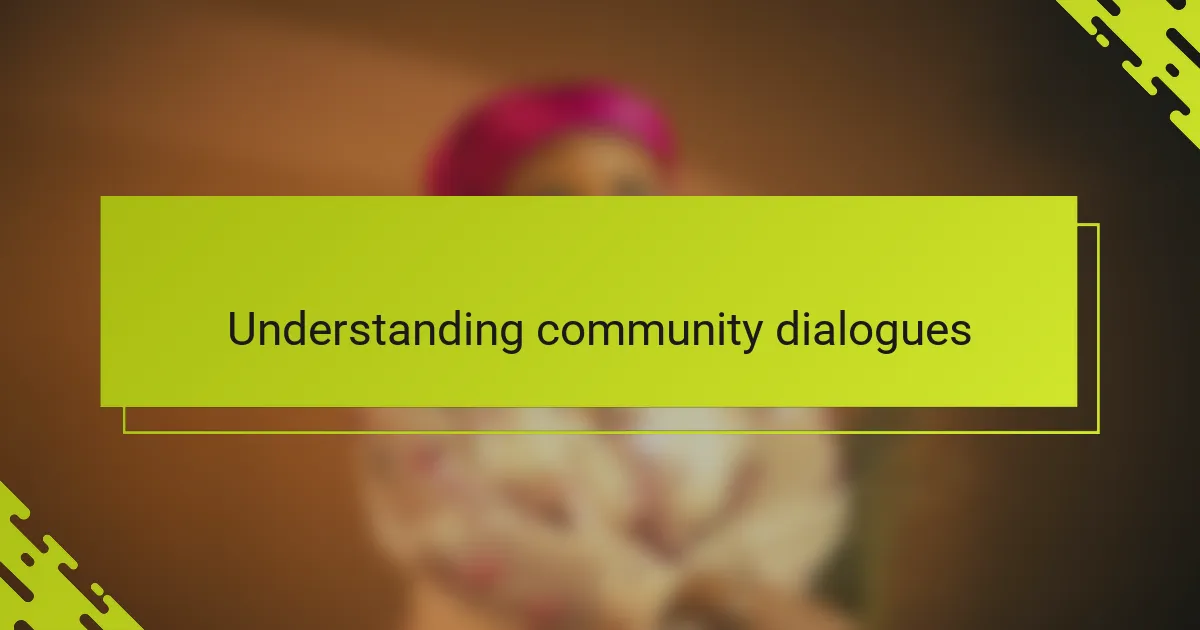
Understanding community dialogues
Community dialogues, to me, are more than just conversations—they’re the threads weaving us closer in shared understanding. Have you ever noticed how sitting in a circle and simply sharing stories can open doors you didn’t even know were locked? That moment of vulnerability, when a person feels truly seen and heard, is powerful beyond words.
I’ve found that community dialogues create spaces where voices often marginalized can take center stage, fostering empathy in unexpected ways. It’s not just about exchanging ideas but about connecting on a human level, where emotions and experiences breathe life into the dialogue. Isn’t that what real connection is about?
Sometimes, I wonder why we don’t do this more often—putting aside judgments and truly listening. Those moments when silence lingers between words can be just as meaningful as what’s spoken, inviting reflection and deeper understanding. It’s in these pauses that the essence of community dialogue reveals itself.

Overview of queer women culture
Queer women culture, in my experience, is a vibrant tapestry woven from diverse identities, histories, and expressions. It’s not just about labels but the lived realities that challenge norms and celebrate authenticity. Have you ever felt that electric sense of belonging when you meet someone whose story echoes your own, yet also surprises you? That’s the heartbeat of this culture.
What strikes me most is how queer women culture thrives on resilience and creativity. From art and activism to quiet moments of self-discovery, there’s a rich pulse that refuses to be silenced. How often do we pause to appreciate the courage it takes to carve out spaces where our truths can flourish?
I’ve noticed that this culture isn’t monolithic—it’s a continually evolving conversation shaped by each individual’s experiences. It’s this fluidity that makes community dialogues so essential; they capture the nuances and complexities that a single story could never convey. When we share these stories, don’t we find new parts of ourselves unveiled?
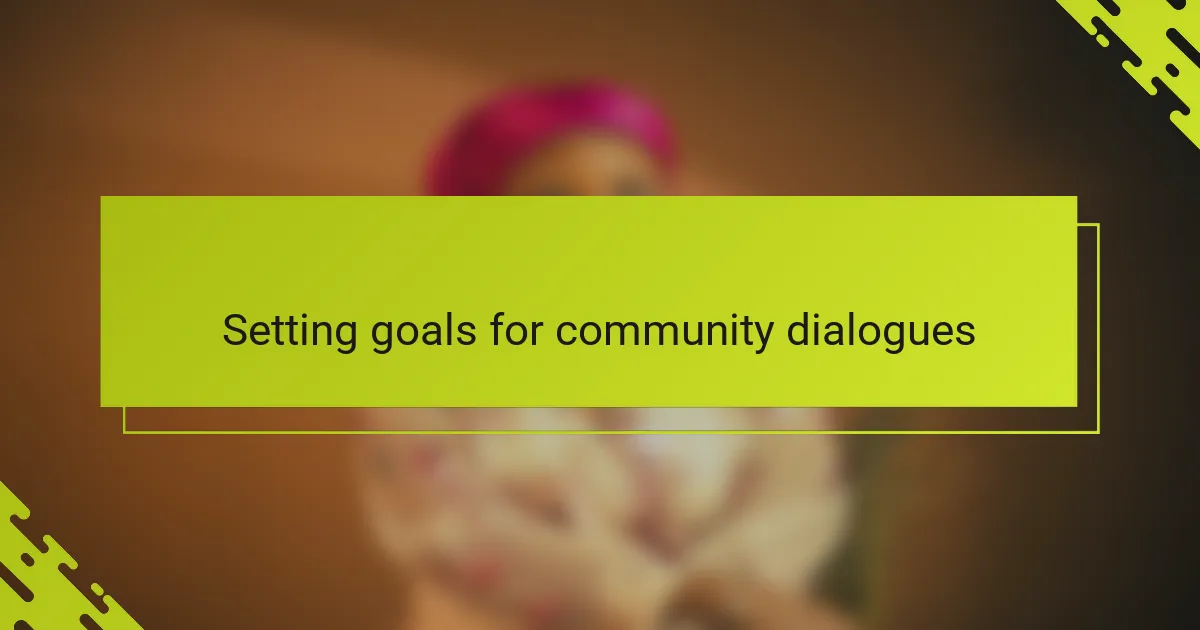
Setting goals for community dialogues
Setting clear goals for community dialogues has been crucial in shaping how these conversations unfold. When I first initiated these gatherings, I realized that without a shared purpose, the energy could drift, and meaningful connections might slip away. Have you ever tried to have a conversation without knowing what you want to achieve? It can quickly become frustrating.
I’ve learned that goals don’t have to be grandiose; sometimes, simply creating a safe space where everyone feels comfortable to speak is enough. For example, during one early dialogue, my goal was simply to encourage active listening rather than immediate solutions. That shift in focus brought a new level of empathy I hadn’t anticipated.
Setting goals also helps in honoring the diversity within queer women culture by ensuring that different perspectives get actual airtime. I ask myself, “What do I want this dialogue to accomplish for each participant?” That question guides me to create objectives that center community healing and understanding, which always feels deeply rewarding.
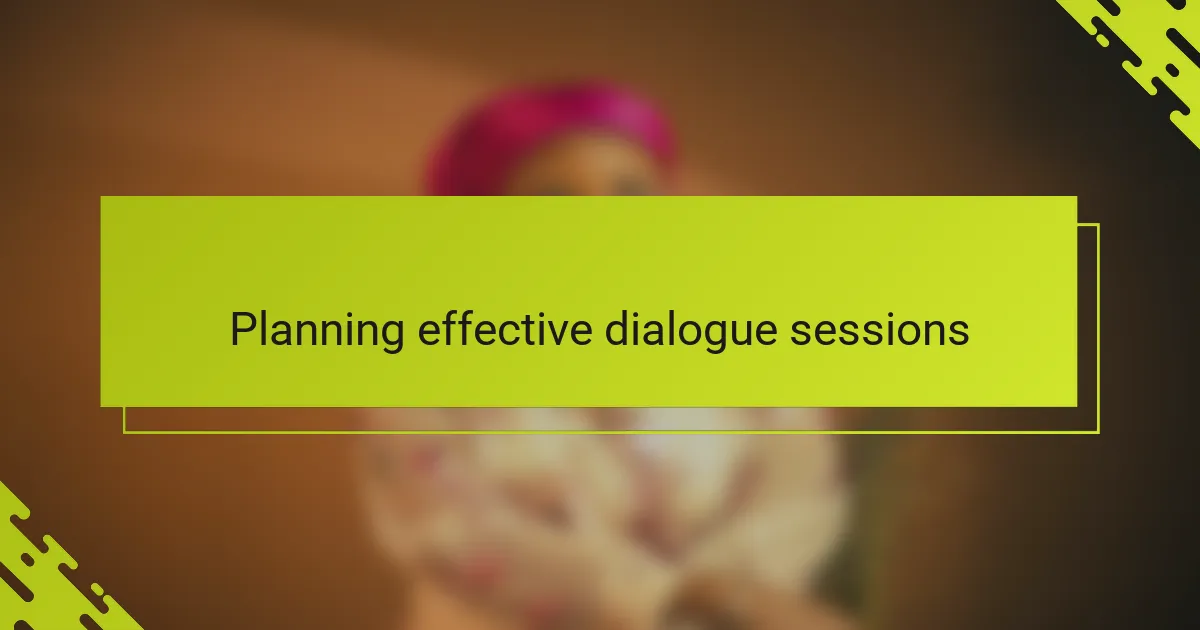
Planning effective dialogue sessions
When planning effective dialogue sessions, I always start by thinking about the physical and emotional space I want to create. Have you ever walked into a room and immediately felt either welcomed or shut down? That feeling lingers throughout the dialogue, so arranging seating in a circle and choosing a calm, accessible location can make all the difference. I remember one session where simply dimming the lights and adding soft music shifted the atmosphere—it felt like a gentle invitation to open up.
Timing is another piece of the puzzle I never overlook. I ask myself, “How much time do we truly need to dive deep without feeling rushed?” In one of my early dialogues, leaving extra time for breaks allowed people to process and return refreshed, which I think led to more honest sharing. Keeping the session duration balanced respects everyone’s energy and helps maintain focus.
Lastly, I find it essential to prepare guiding questions but remain flexible. Have you noticed how too rigid a structure can stifle genuine conversation? During one community dialogue I facilitated, an unexpected topic emerged that was clearly important to the group. Because I was open to shifting the agenda, that dialogue blossomed in ways I hadn’t planned but deeply valued. Planning well doesn’t mean controlling every moment—it means guiding with intention and heart.
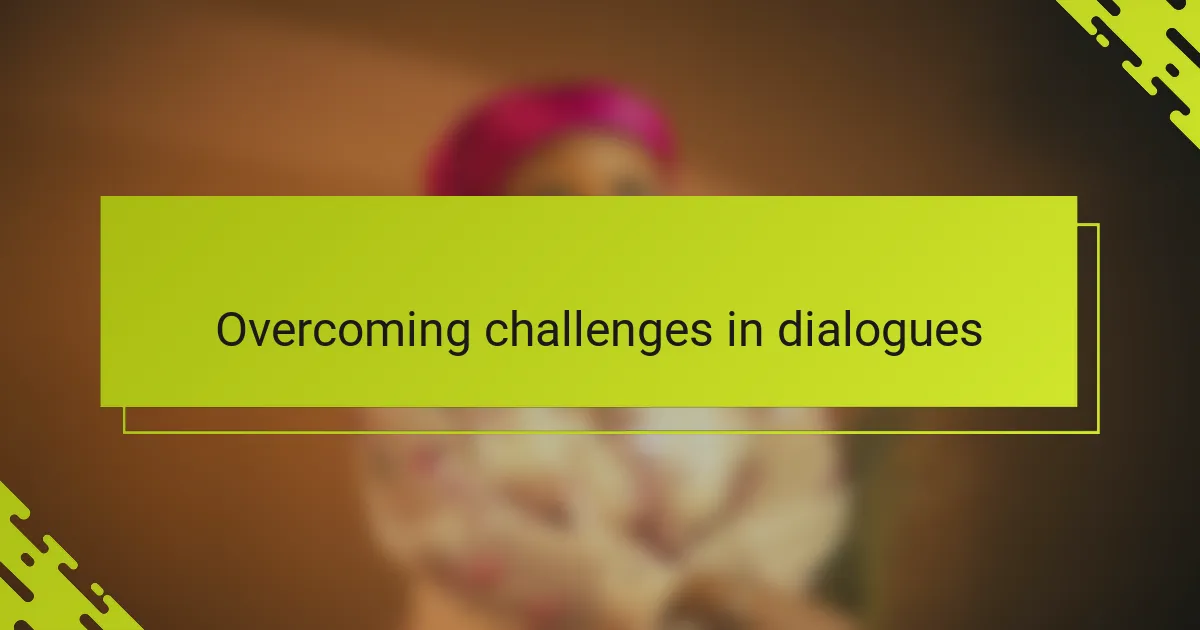
Overcoming challenges in dialogues
Challenges in community dialogues often sneak in quietly, like that moment when a well-intended question unintentionally stirs discomfort or silence falls thick in the air. Have you ever felt the weight of hesitation, wondering how to bridge that sudden gap? I remember one session where a misstep nearly shut down the conversation, but acknowledging the discomfort openly invited healing instead.
Sometimes, the biggest hurdle is navigating different communication styles and emotional responses. It’s not always easy to create a space where everyone feels safe to speak and be vulnerable at their own pace. I learned to listen between the lines, noticing when someone’s words carried unspoken feelings, and gently inviting them to share only if—and when—they were ready.
Patience has been my steadfast companion in overcoming these obstacles. When tensions rise or misunderstandings emerge, pausing to breathe and re-center the group often made all the difference. Have you tried simply naming the challenge together? That shared recognition, in my experience, empowers the community to move forward with greater trust and openness.
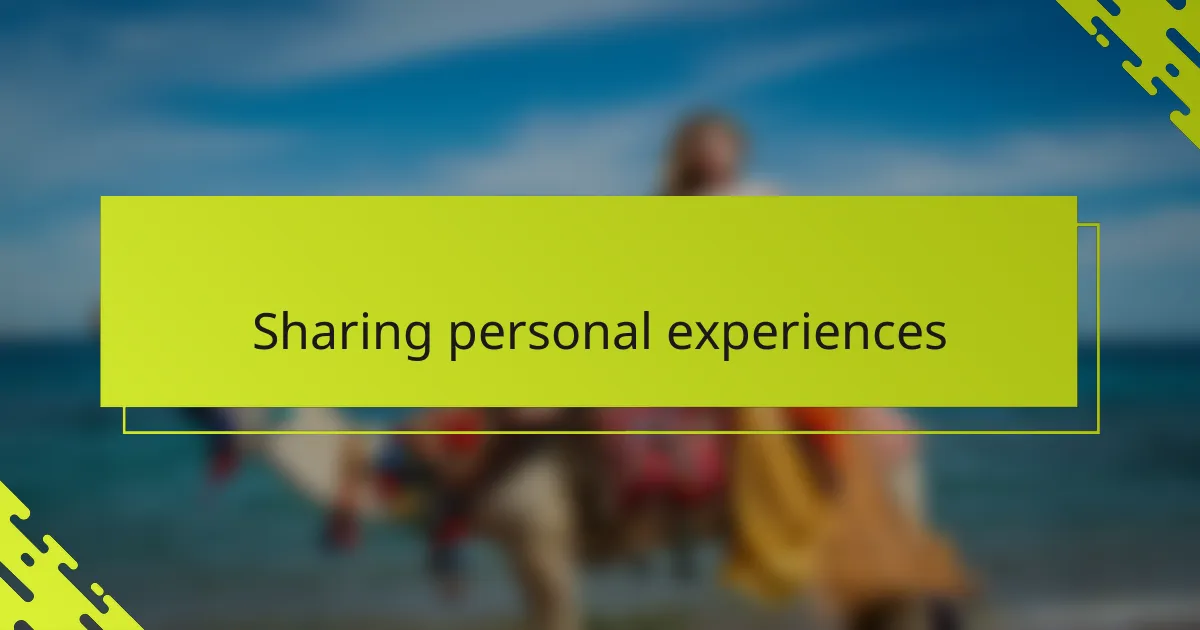
Sharing personal experiences
There’s something deeply humbling about sharing my own story in these dialogues. I recall one evening when, hesitating at first, I chose to speak openly about my journey, and the room seemed to breathe with me—that feeling of mutual vulnerability still stays with me. Have you ever noticed how a single personal experience can invite others to lower their walls and join in authentically?
Sometimes, I find that revealing my struggles or joys sparks unexpected connections. In one gathering, my honest reflection on identity struggles prompted others to open up about theirs, creating a ripple effect of trust and understanding. Isn’t it fascinating how our personal stories, though unique, often hold threads that bind us together?
Sharing also means embracing discomfort at times, but that’s where growth happens. I learned early on that when I model openness, it gently encourages others to do the same. Have you ever felt that mix of nerves and hope before telling something personal? For me, those moments have been the heartbeats of meaningful community dialogue.
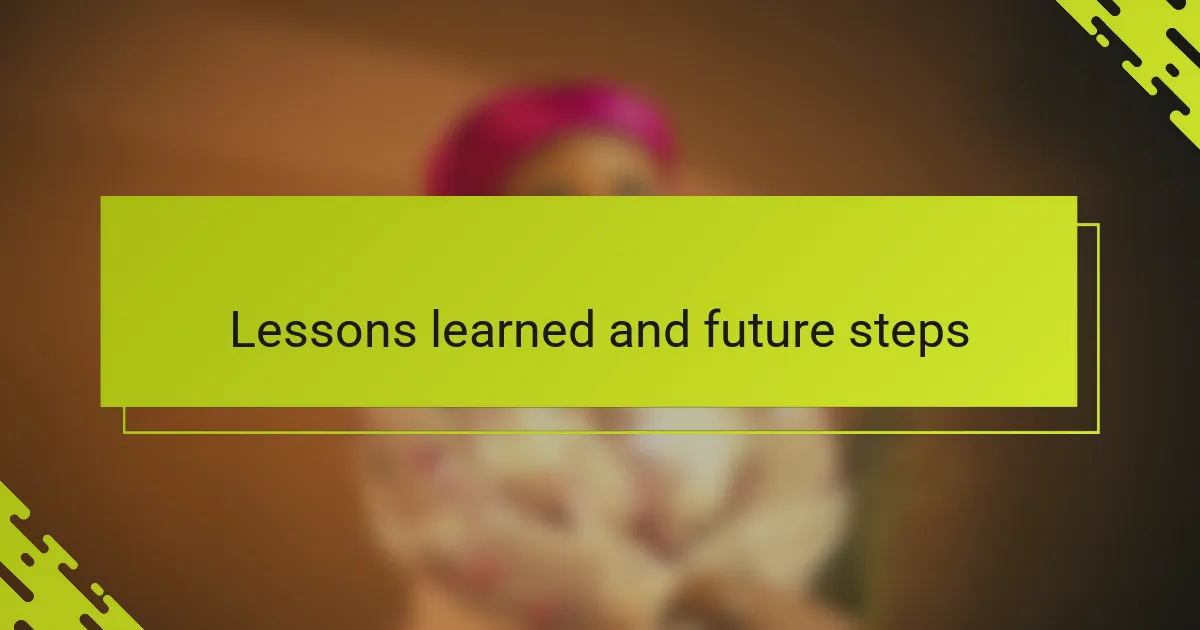
Lessons learned and future steps
One lesson that stands out for me is the importance of embracing imperfections in the process. Have you ever noticed that some of the most genuine breakthroughs happen not when everything is perfectly planned, but when moments of vulnerability or unexpected turns arise? I’ve learned to welcome these as invitations for deeper connection rather than hurdles to overcome.
Looking ahead, I’m committed to creating even more intentional spaces where listening takes precedence over speaking. What if we focused less on finding solutions and more on holding each other’s stories with care? I believe this shift could transform dialogues into long-lasting wells of empathy and community healing.
Finally, I see future steps involving expanding who gets to speak and whose voices might be missing. How often do we consciously reach out to those on the edges of our circles? By inviting broader participation, I hope to nurture a richer, more complex fabric of shared experience that truly reflects the spectrum of queer women culture.
